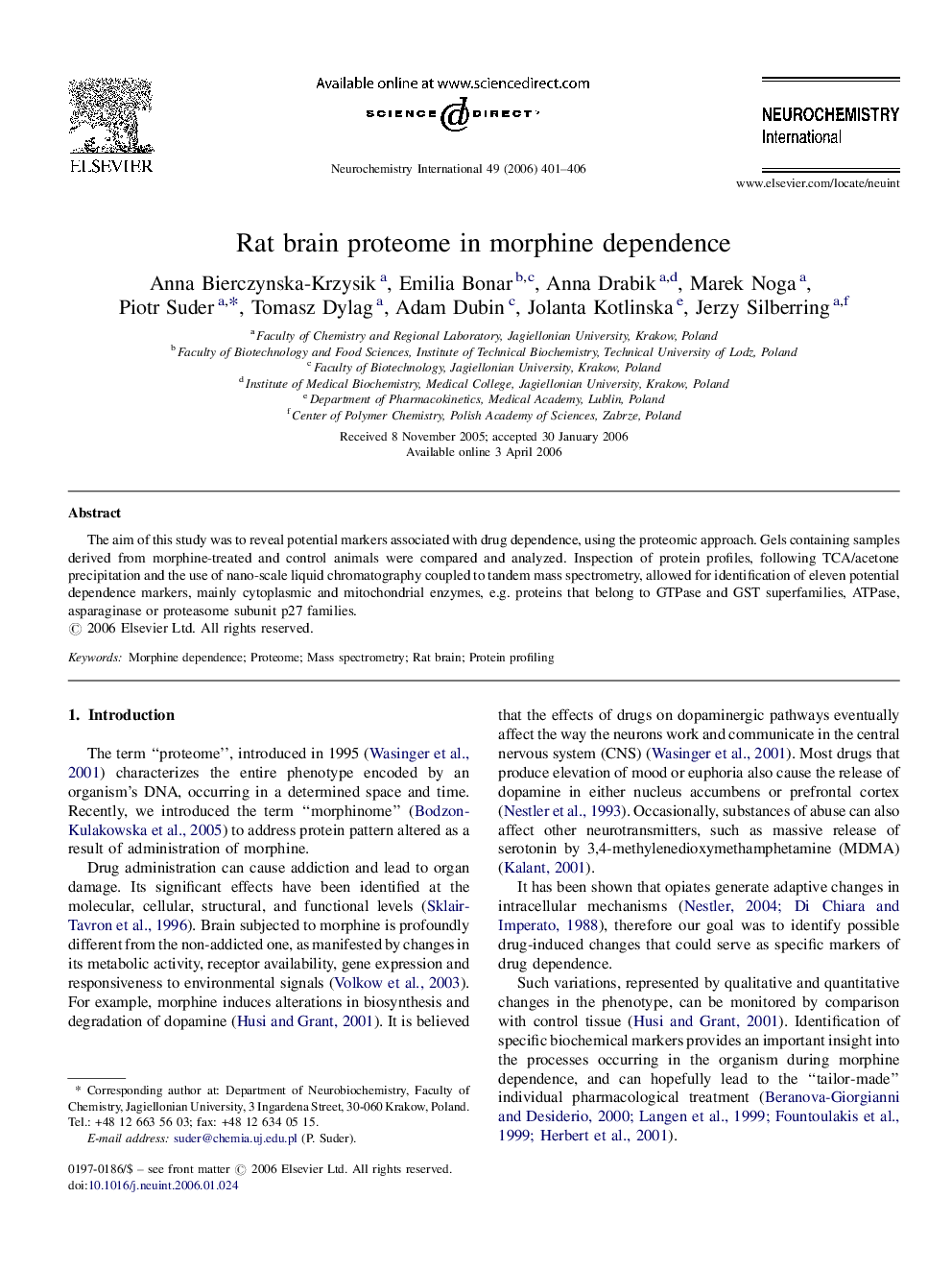| Article ID | Journal | Published Year | Pages | File Type |
|---|---|---|---|---|
| 2202137 | Neurochemistry International | 2006 | 6 Pages |
Abstract
The aim of this study was to reveal potential markers associated with drug dependence, using the proteomic approach. Gels containing samples derived from morphine-treated and control animals were compared and analyzed. Inspection of protein profiles, following TCA/acetone precipitation and the use of nano-scale liquid chromatography coupled to tandem mass spectrometry, allowed for identification of eleven potential dependence markers, mainly cytoplasmic and mitochondrial enzymes, e.g. proteins that belong to GTPase and GST superfamilies, ATPase, asparaginase or proteasome subunit p27 families.
Related Topics
Life Sciences
Biochemistry, Genetics and Molecular Biology
Cell Biology
Authors
Anna Bierczynska-Krzysik, Emilia Bonar, Anna Drabik, Marek Noga, Piotr Suder, Tomasz Dylag, Adam Dubin, Jolanta Kotlinska, Jerzy Silberring,
